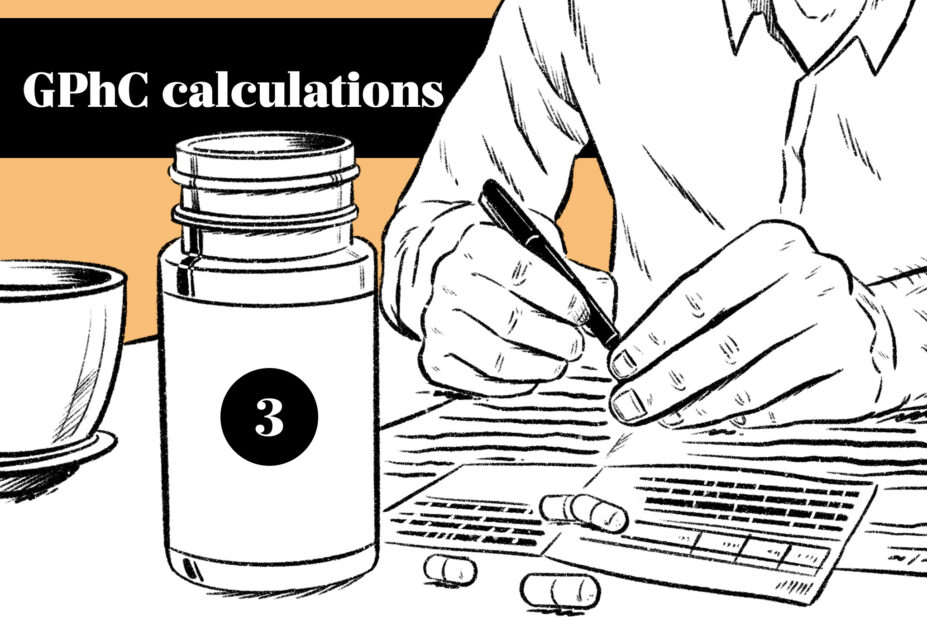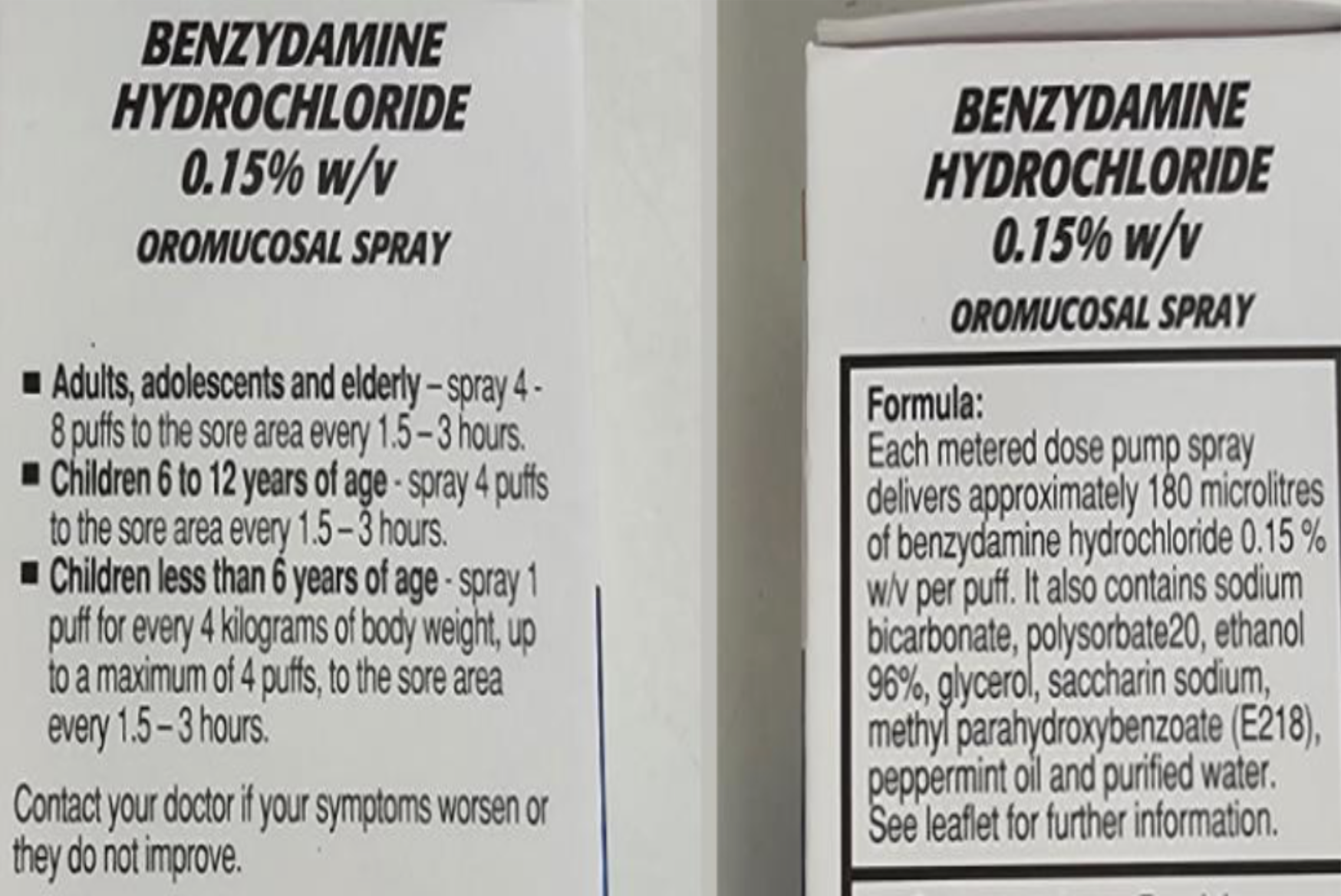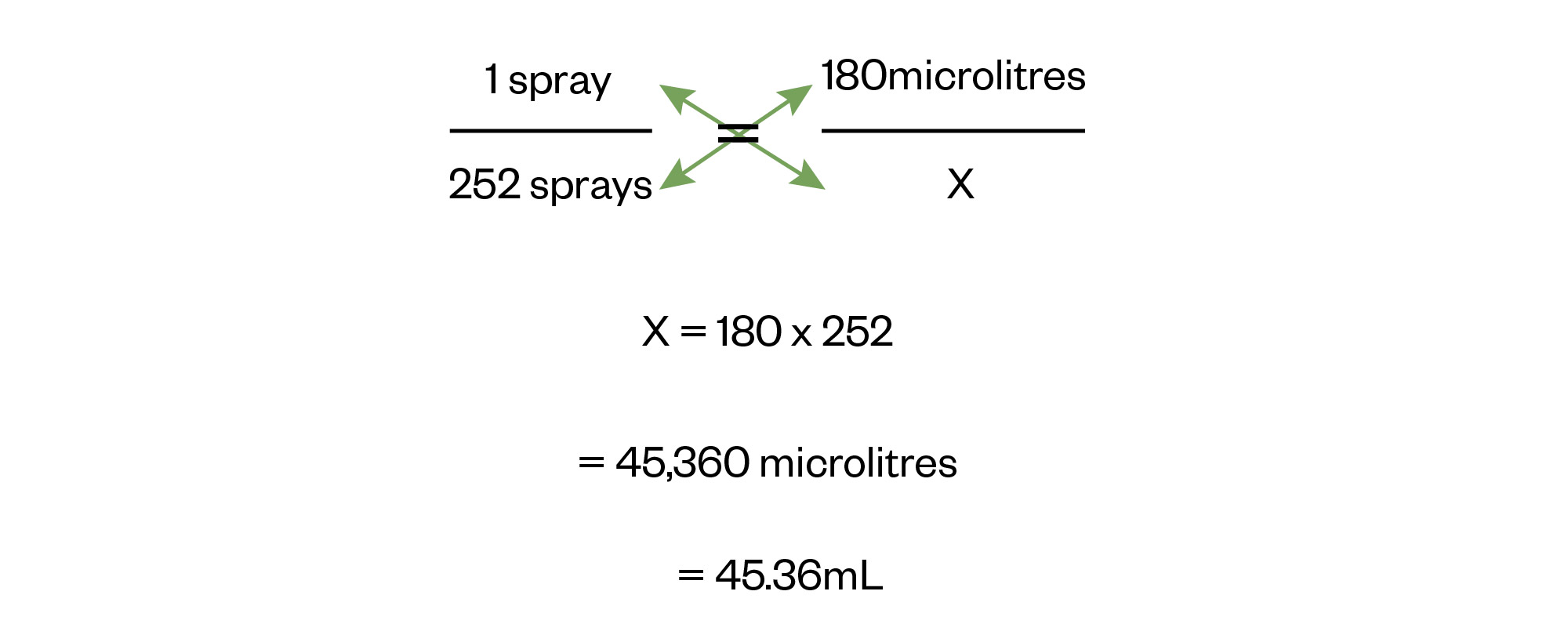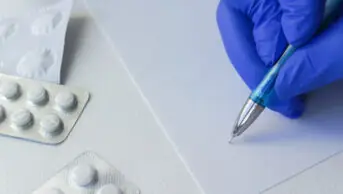
Wes Mountain/The Pharmaceutical Journal
By the end of this article, you should be able to:
- Appreciate the variety of different resources and artifacts that may contain information on does and dose regimen;
- Efficiently locate relevant dosage information from an artefact;
- Be able to covert units from how they are expressed within the artefact to align with the requirements of the question.
Introduction
Calculating the dose and dose regimen of a medicine is a necessary skill for pharmacists. The ability to do so correctly is assessed by the General Pharmaceutical Council (GPhC) in line with the registration assessment framework.
This article aims to provide foundation trainees with guidance on how questions on dosages will be asked during the registration exam. A worked example is provided, showing a step-by-step explanation outlining how a dosage question can be approached during the exam.
Please note that the example question is only an approximation of what to expect and that there may be more than one way to arrive at the correct answer.
An introduction to doses and dosage regimens has been covered in a previous article published by The Pharmaceutical Journal, which contains example questions and calculations. We will now take this a step further by introducing a scenario that includes an artefact.
Foundation trainees need to become familiar with the various forms by which dose units are presented and how the information can be written on medicine containers or other artefacts. For example, you could look at a selection of common medicines and read through the summary of medicinal product characteristics (SmPC) and/or the outer and inner packages of drug containers to familiarise yourself with the units, terminology and any concentrations used. You could also look at how doses and dose regimens are presented in resources such as the British National Formulary and other resources and artefacts, such as prescriptions and medication administration charts.
Taking time to consider the different ways doses and regimen information is presented will provide you with valuable insight into potential questions that the GPhC examiners may ask.
You should also take care to note the specific details around administration, including details such as the number of times treatment would need to be administered each day and what constitutes an individual dose. It is important not to confuse these two things.
You also need to be prepared for questions that draw from any of the common dosage forms, including tablets, capsules, creams, oral suspension, intravenous solution, sachets, suppositories or infusions.
Make sure you are familiar with the many ways in which doses can be expressed. These different expressions of dosage are reflected in the variety of ways in which examiners can structure questions in the GPhC exam. The various ways of expressing doses include metric units of weight, volume and rates, e.g. mg, kg/m2, mg/kg/day, mg/hour, mg/kg, mL/hour, drops/minute, mL/kg/hour, patches, nebule(s) used or number of inhalations inhaled.
As an example, the dosing information and formula information for benzydamine oro-mucosal (0.15% w/v) spray is shown in Figure 1.

Author provided
After scrutiny of this artefact, a number of different potential questions can be identified. These include:
- Working out the amount of drug administered in mg at each dose for a particular patient;
- The amount of drug administered in sprays over a given period;
- The number of containers to last for a specified dosage regimen.
These are just a few examples; other questions could also be asked based on the information presented. The following step-by-step worked example explores this in greater detail.
Example question
A seven-year-old boy requires benzydamine oro-mucosal spray to be administered at the maximum dose to the affected area for seven days. He has been advised to administer the doses between 08:00 and 21:00.
The benzydamine spray packaging with relevant information can be seen in Figure 1.
Calculate the weight in (mg) of benzydamine hydrochloride administered for the prescribed course if the patient uses it at the maximum dose. Give your answer to the nearest 0.03mg.
Comments and explanation
This question is designed to test your competence in locating the relevant information on the resource (packaging) and using it accurately to solve your calculation.
You are required to correctly interpret the information on the packaging, for example identifying the correct dose for the patient’s age, working out how many times you would apply the spray between 08:00 and 21:00, recognising that a stat dose will be required at the beginning and using the maximum dose as instructed.
Your calculation also requires you to define or interpret the concentration of 0.15% (w/v). This means 0.15g/100mL or 150mg/100mL.
At the end of the calculation, you need to also round your answer to the nearest 0.03mg. Note that this is an unusual rounding requirement, but one that we selected in order to fully test your rounding skills.
There are multiple steps to this question and you will need to combine knowledge of calculations with an awareness of pharmacy practice. Examiners design GPhC calculation questions in a way that assesses multiple skills and competencies, so you need to be able to get each aspect right to arrive at the correct answer. An error at any step will most likely result in an incorrect answer.
To answer the question correctly, we proceeded using the following steps. Other approaches or an alternative sequence of steps are also possible.
Step 1
Document the key pieces of information from both the question and the artefact.
- The maximum dose for a seven-year-old boy is four sprays every 1.5 hours. Do not get confused by the dosage interval being given as a range (1.5–3.0 hours). If the spray is applied every three hours, it would become the minimum dose;
- Doses are to be given between 08:00 and 21:00. This equates to a 13-hour treatment period each day;
- One spray = 180 microlitres (note the units used here — conversions will be necessary later);
- Concentration is 0.15% (w/v) which means 0.15g/100mL or 150mg/100mL;
- There is a stat dose at the beginning when the patient starts the course.
Step 2
Calculate the sprays used between 08:00 and 21:00 for seven days.
If the spray is used every 1.5 hours over a 13-hour period, then the number of times used per day can be calculated as:

This would be rounded down to the nearest whole number, giving us a value of eight times per day. Note you have rounded down here as opposed to rounding up since a dose can only be applied when a full interval of 1.5 hours has been reached, and if the interval is less than 1.5 hours, a dose cannot be given no matter how close it is to the next full interval.
An extra dose needs to be added to account for the stat dose, so the patient would be applying the medication 9 times each day. Alternatively, you can count doses starting at 08:00 and 21:00 at 1.5-hour intervals and the number of times the spray is applied per day is nine.

The Pharmaceutical Journal
Remembering that each application requires four sprays, we can work out the total number of sprays as follows:
Dose x number times per day x number of days
Giving us 4 (sprays) x 9 (times each day) x 7 (days of treatment) = 252 sprays
Step 3
Convert number of sprays to volume in mL.
Here, it is vital that you are able to spot the need for conversion of units and are comfortable performing the conversion.
From the packaging information we know that:
1 spray = 180 microlitres (Equation 1)
Therefore 252 sprays = X (Equation 2).
From equation 1 and 2, if you cross multiply:

(Knowledge of conversion of units is key here)
Step 4
Convert volume in mL to mg
It is also necessary to understand the definition of concentration that has been given as % (w/v) and how to covert this to mL. Once we know the volume in mL we can use this to calculate the weight in (mg) of benzydamine hydrochloride administered.
The strength of benzydamine hydrochloride is given as 0.15% (w/v), which can be restated as 0.15g /100mL.
We can convert weight in g to mg and use the volume that we established in the previous step to set up the following cross multiplication.

Note that the question asks for you to round to the nearest 0.03mg so you need to check this carefully. Knowledge of rounding is essential here and, if your rounding is incorrect, you would submit an incorrect answer. Unfortunately there are no marks for workings, only the final correct answer is awarded a mark. In this case, 68.04mg is divisible by 0.03mg so no further adjustment is required.
Final answer: 68.04mg.
Disclaimer
The views in this article are those of the authors and do not represent the views of any organisations they are associated with. The questions and explanations presented here are for educational purposes only and do not replace your training, knowledge and application of professional judgement as a pharmacist or trainee pharmacist. The example questions used in this article and the answers provided are for educational purposes and should not be translated to represent what would happen in real practice.
Acknowledgements
All practice questions were reproduced with kind permission provided by ‘Focus Pre Reg Revision‘.

